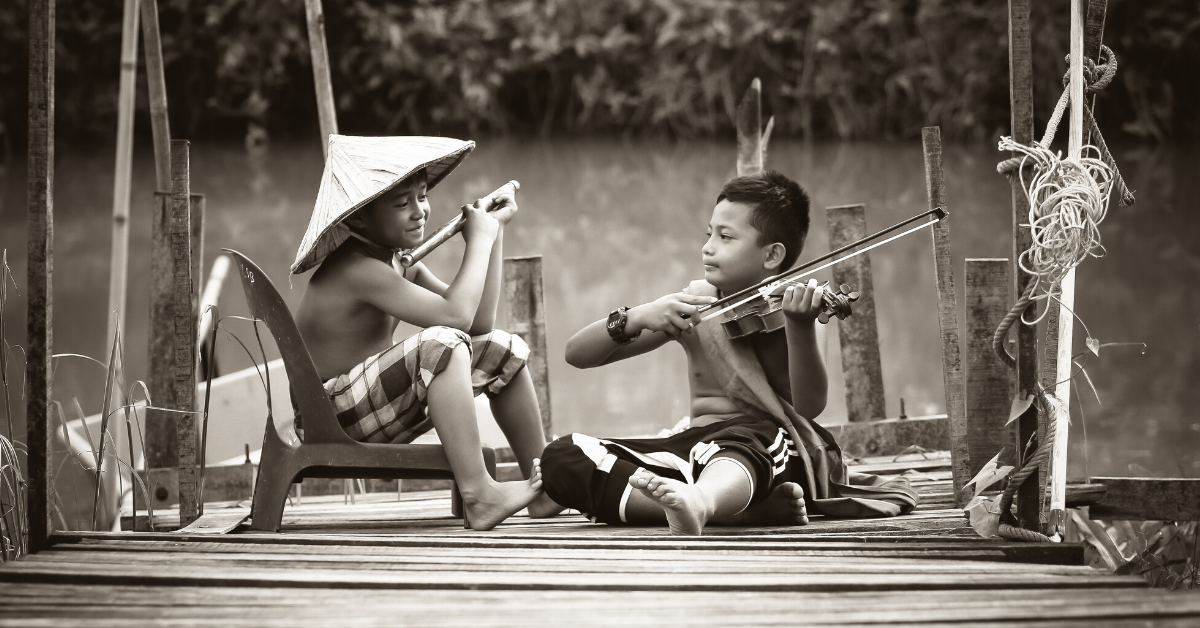Exploring as wide a range of instruments as possible is exciting for all of us – young and old! Thinking about the range of frequencies and attacks is important so that children can identify that a piece of music is rather like building a house – it needs a foundation and structure with windows to experience light and darkness, we can furnish our house with different colours and textures as well as think about warmth and cold. Therefore, relating the sounds of instruments to normal things can help to connect and express feelings more. Discussing how different instruments work together in a song or piece of music enhances a child’s listening repertoire and their understanding of the instrument’s role.
Introducing that instruments belong to ‘families’ such as:
Percussion – these instruments include
xylophone, vibraphone, drum kit, timpani, djembe and hundreds of others
Brass – these instruments include
trumpets, trombones, tuba
Strings – these instruments include
violin, viola, cello, harp
Woodwind – these instruments include
flute, clarinet, oboe, bassoon, saxophone
Keyboard – these instruments include
piano, organ, harpsichord, keyboards
There are so many instruments throughout the world which can be put into the above ‘families’. It’s good to explore as many different types of flutes as possible to help children understand that music is truly universal. This will allow them to explore the different countries and territories of the world as well as listening to how each flute may sound differently. For example, some flutes are played using one’s nose!
Encouraging children to make their own instruments, explaining their creative process and then demonstrating their creations and to decide which family they belong to will help in their overall confidence, verbal delivery, and listening skills. Another idea is to ask the children to pretend to play the flute when they hear a flute being played or a trumpet when they hear that and so on. These are all ideas to encourage active listening and participation.

